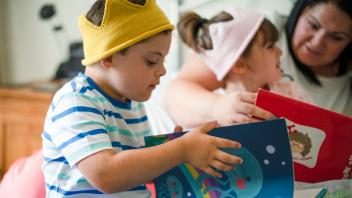Recently I watched a small group of young children playing in a childcare center. There were toys and books and lots of other things around but that’s not what held their attention.
What did? A large (particularly when compared to the children) cardboard box.
I didn’t hear the conversation because I didn’t want to become a distraction to their play. But they were clearly imagining something much more interesting than the box. Had it become a train? A car? A house? I suppose it could have been any one of these or virtually anything else — limited only by the children’s imagination.
Play has changed over time. There are many more distractions, lots of concerns over safety and well-being, and pressure to perform — much of which impacts children’s ability to play independently.
Nonetheless, the benefits of creative play are recognized; it has a positive impact on children’s social, emotional, and cognitive development.
How has our society’s affinity for electronic gadgetry had an impact on children’s play? Has it changed how adults interact with children and the behaviors that adults model for children?
Maybe Antoinette Portis’ mini-classic, It’s Not a Box (HarperCollins) should become required reading for adults — then shared with children. The book is a simple yet totally recognizable take on imaginative play — with a box. Like the children I watched play, this rabbit/child’s box takes him to places that can only be imagined.
We should try to give children space for imaginative play. It’s when a box is not a box.

